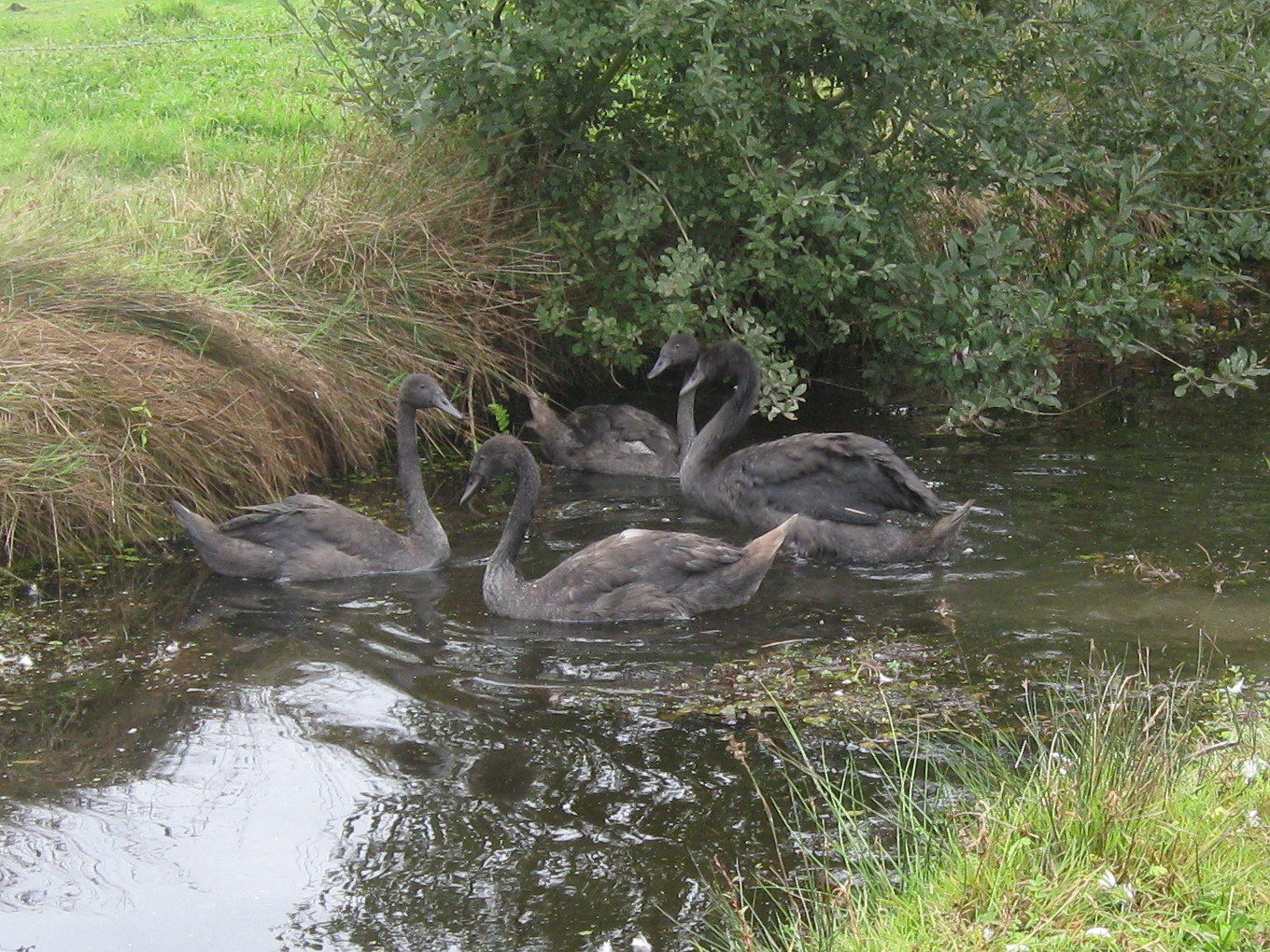A Family of ‘black’ Mute swans. By Ellen

The Gwent Levels are an extensive area of land located on the north side of the Severn Estuary in east South Wales, outside Newport. They are an important wetland resource and one of the largest surviving areas of ancient grazing marshes and reen systems in Britain. Reens, spelt rhyne in England, are drainage ditches which have several purposes apart from their main function of conveying water – one being to prevent adjacent land from drying out in the interests of conservation and agriculture. Without this system, thousands of acres of good agricultural land would be flooded every year. The Gwent Levels is of national significance for its wildlife and archaeology and one of the last surviving areas of ancient grazing marshes and reen systems in Britain.
Unfortunately, the reens also provide ideal places for fly tippers to off-load their unwanted rubbish. This can be anything from builders’ rubble, garden waste, lopped tree branches and worst of all oil, or similarly unknown and often difficult to remove substances. It was one of these ‘unknown substances’ which prompted a call from Maggie, the person who owns the local horse stud at the top of Blackwall in Magor. The reens, which are mostly protected on both sides by high growing undergrowth of bracken, reed mace, hedge parsley and yellow iris etc. are ideal nesting sites for swans. All the local people know where they are so if anything happens to any of them, they know about it and we are alerted immediately. Maggie rang to tell us the family of swans which have used the reens around her property for many years had turned black !!!
It was early evening with the light just beginning to fade when we arrived. She directed us to the reen running along one side of her field where we could just make out the long necked shadowy shapes of four cygnets and two adults, the latter only recognisable by the orange red of their beaks. Although we were equipped to carry six swans in the car, what we hadn’t appreciated was how quickly we could ‘lose’ their shadowy shapes in the fading light. Eventually however, and with help from our two local ‘helpers’, Len and Jack (and sometimes the horses joined in), we were at least able to catch the two adults. The cygnets would have to wait till another day, after all, they were big enough now not to need the protection of Mum and Dad.
The following day we were on the M5 to the West Hatch Wildlife hospital near Taunton with the two adult ‘black’ swans. West Hatch is where the majority of oiled sea birds are taken for washing, rehabilitating and their release. A repeat journey was made the next day after we had managed to catch two of the four remaining cygnets having failed to even find the others. At West Hatch we had a look at the adult birds after their first wash and were extremely surprised to see whatever it was they had managed to cover themselves with, had almost completely washed off and they were back to their beautiful snowy white again. Interestingly, they still had their water proofing. So the identification of this substance was a mystery. It had no smell, it was not greasy but had a sort of smooth, very slightly gritty texture. We collected some of the discoloured feathers with the intention of trying to get the substance analysed but unfortunately the VLA at Langford which is always extremely helpful, does not have facilities to do any toxicology testing although their suggestion it could be some sort of graphite lubricant sounded quite plausible.
On the third day Maggie phoned to say she had found the remaining two cygnets but catching them was going to prove difficult if not impossible as they were in a reen which was protected by some very unfriendly undergrowth so to be on the safe side we contacted Red Watch of the Fire and Rescue in Newport. As always, they were brilliant and arrived in full force within the hour. Donning their ‘health and safety’ gear three of them were in the waist high, definitely rather doubtful looking water of the reen on the opposite side of Blackwall to the stud. Within ten minutes they were back out complete with the two remaining ‘black’ Mute swan cygnets wrapped and in their Ikea bags ready to be on their way down the M5 to the wildlife hospital for their wash and brush up and to be re-united with the rest of their family. We look forward to the day we can bring them home and back to the reens which have been their home for many years.
And then they came back to the reens which have been their home for so long.




